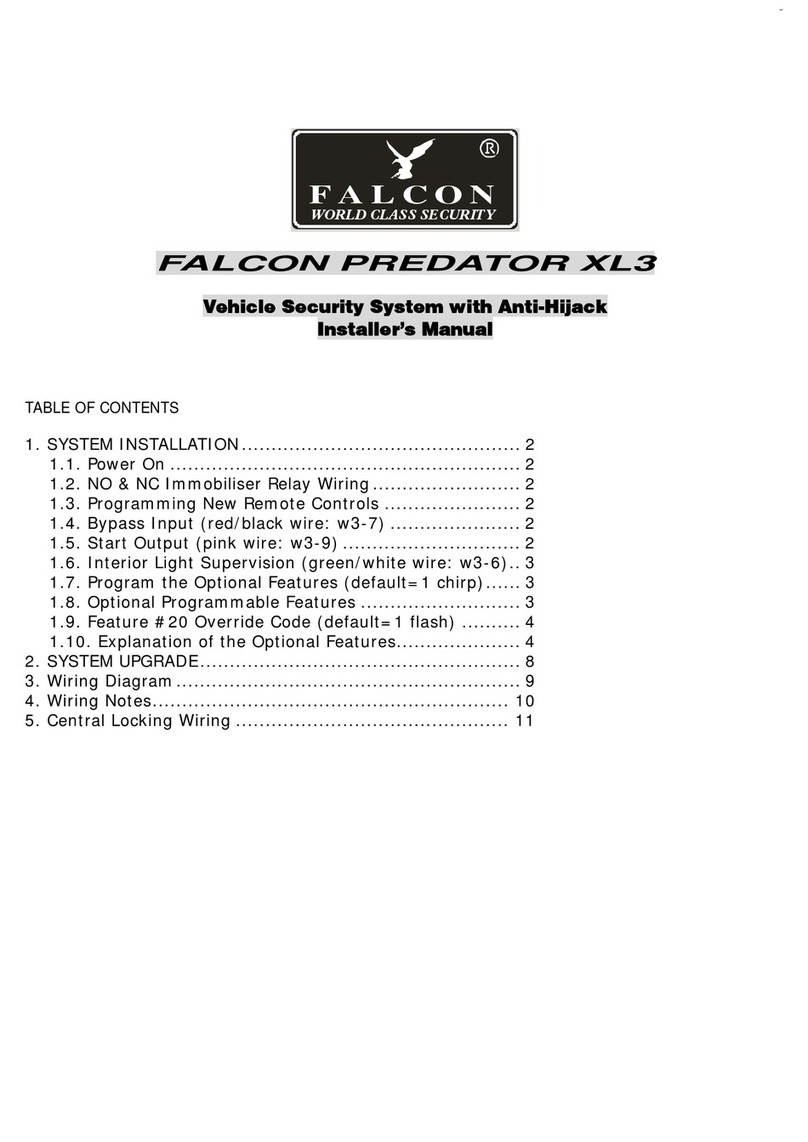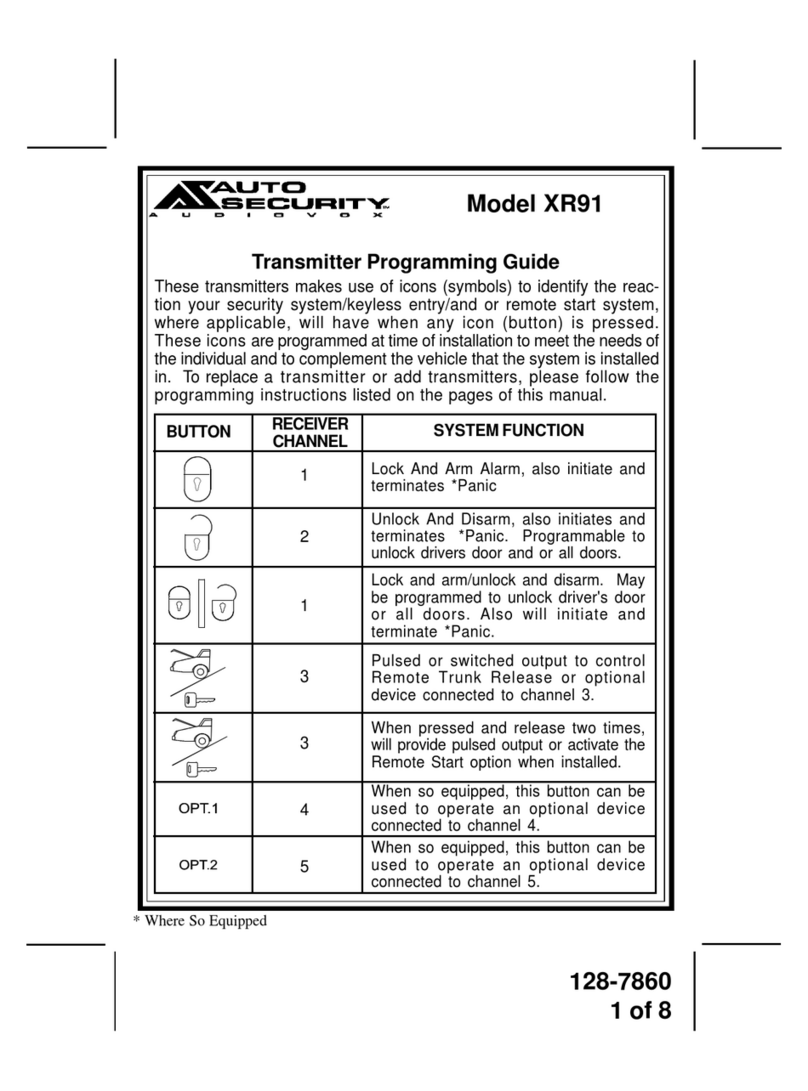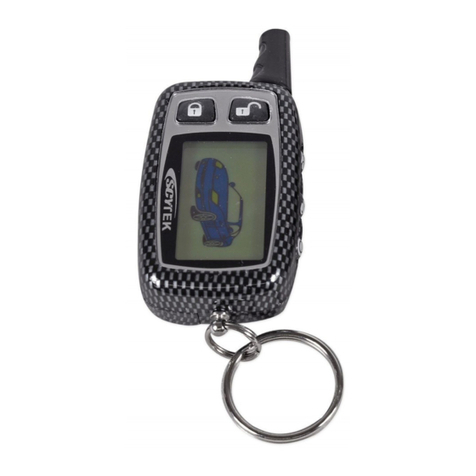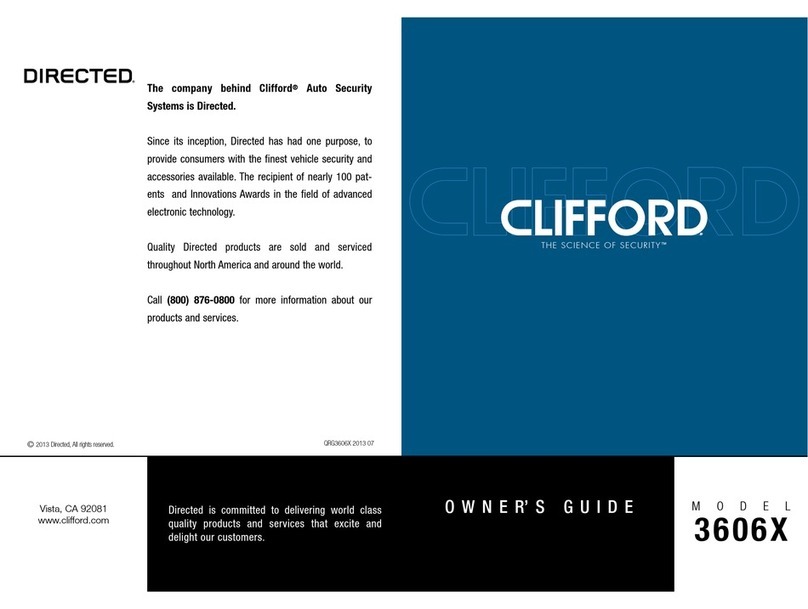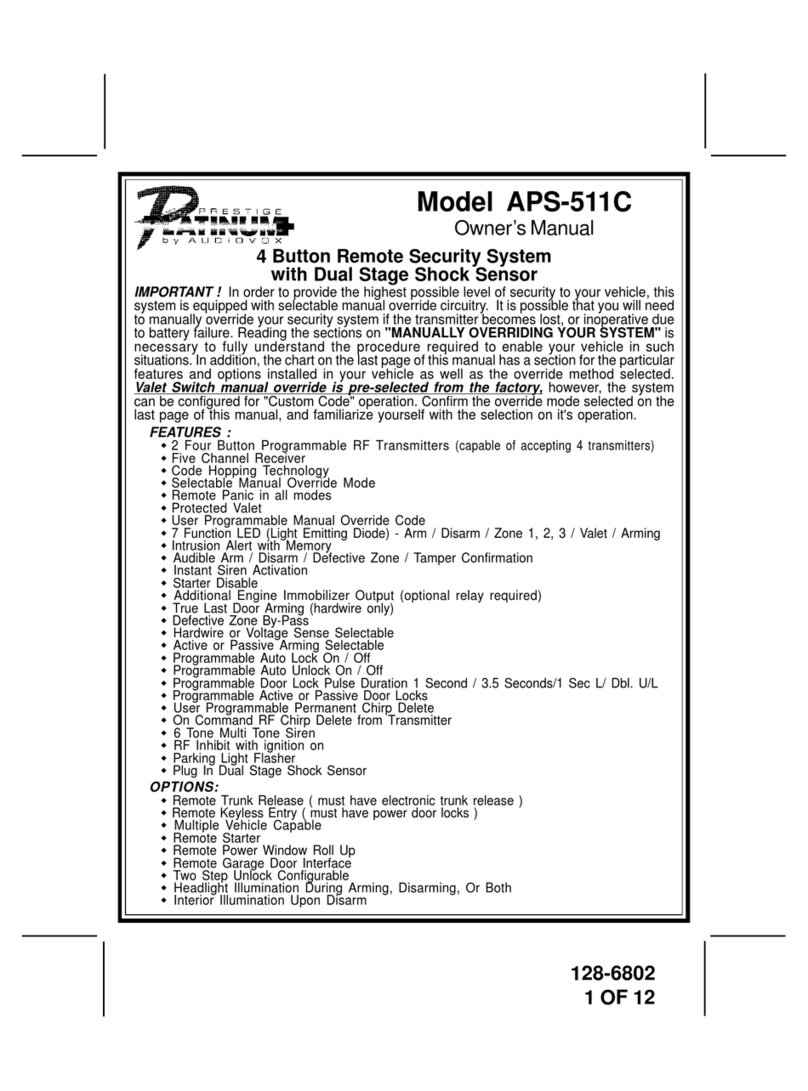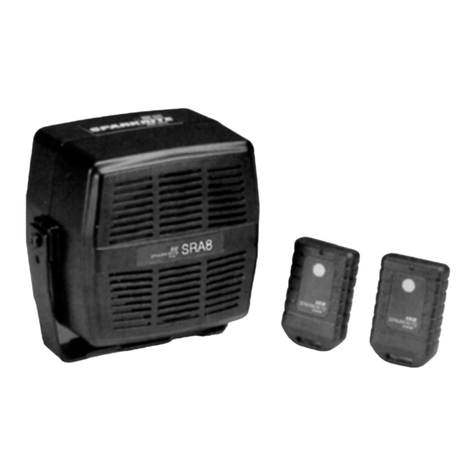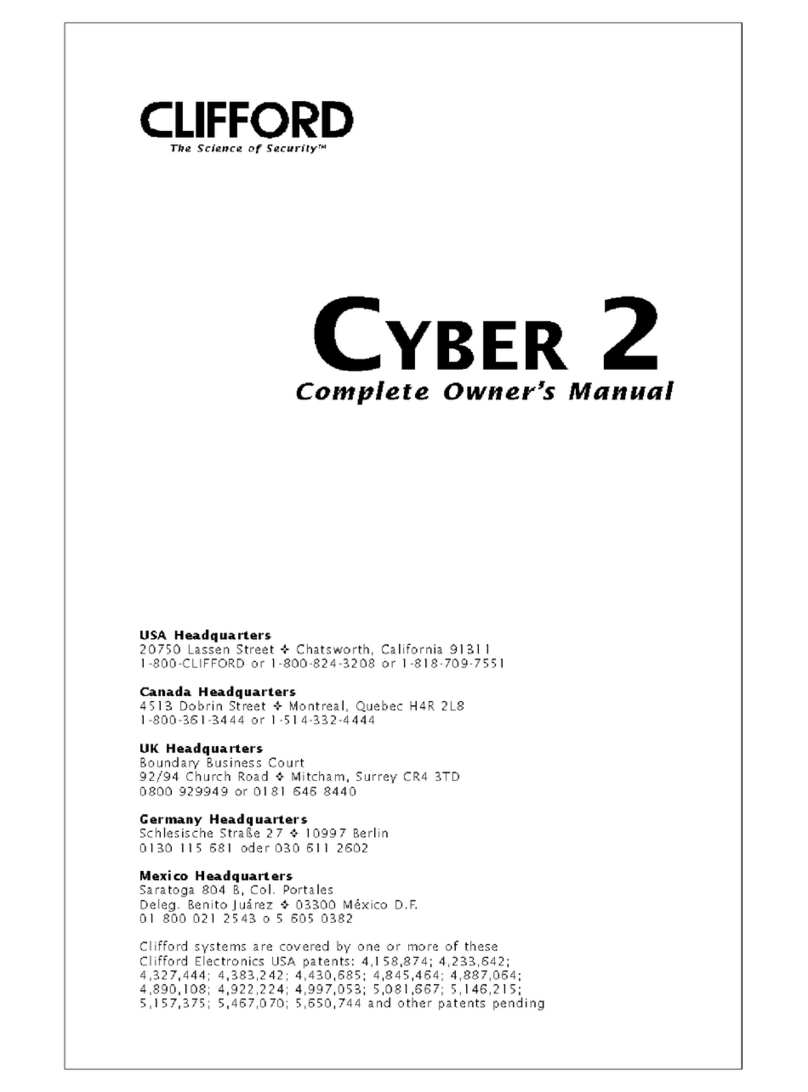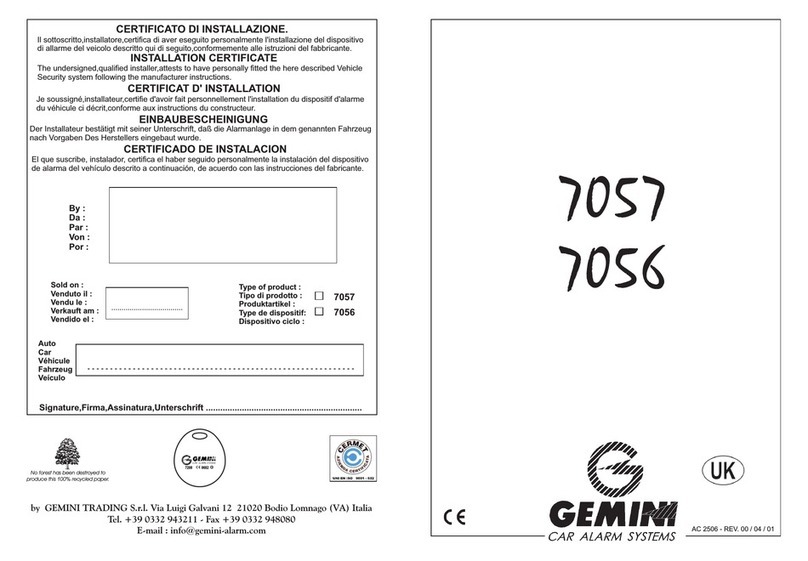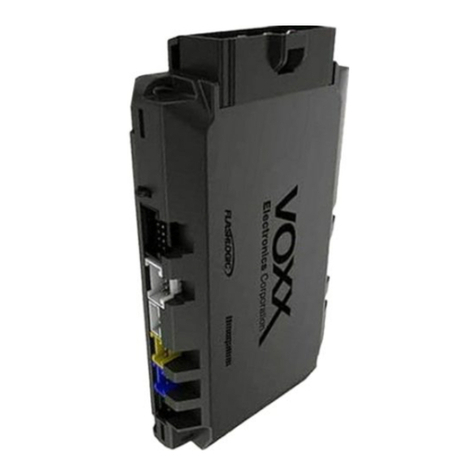Alarm description
Introduction
This document is compatible with slave-security systems TEC-
700/710 (hereinafter referred as the Alarm)
The Alarm is designed for protecting the vehicle from being stolen
from its parking location and from being hijacked. The Alarm also
notifies if the vehicle is being tampered with.
Owner is authenticated by enterning PIN code from vehicles
buttons, for example steering wheel.
The alarm contains a built-in tilt sensor and has a connector for
optional sensors
To see the list of vehicles compatible with the Alarm along with
information on its functionality please use Integrator (www.tec-
integrator.com).
Terms
Programming button — one of the factory (default) buttons, with
which the Alarm can be programmed (buttons specific to the vehicle can
be found in the Integrator). Programmable button can be changed only
within short time after installation of the Alarm. Also built in button can be
used as programming button.
Security — is a state of the Alarm, which is turned on after locking
the doors in any way provided by the manufacturer of the vehicle
(keyless entry system, remote control, rearming the alarm etc) and
turning factory security system. Secure state can be left by unlocking
the doors with the original remote control or vehicles keyless access
system or by entering the PIN code.
Guard mode — active state of the PINTODrive® and AntiHiJack:
if one of these functions has entered guard mode, to leave it it is
required, to enter PIN-code, otherwise engine will be locked.
Comfort — feature allowing not only to lock doors from the factory
remote, but also to raise windows (sunroof also can be closed).
Alarm functions
• Sound and visual notification if the alarm was triggered
• Built-in shock and tilt/movement sensors
• Theft protection when the vehicle is parked - PINTODrive®
• Antihijack protection - AntiHiJack.
Alarm operation algorithms
Arming/Disarming
To arm the alarm press the button of the remote, or close the doors
with keyless system or lock the door with the key. Alarm will warn you
that it is armed with audible signal and LED flashes. After some time
interval between flashes will decrease.
To disarm the alarm press button of the remote, or open vehicle
with keyless system. Alarm will warn you with 2 audible signals. LED
will go off.
Emergency disarming
If remote is unavailable (for example it has low battery charge), to
disarm the alarm do the following:
1. Open drivers door with key. Alarm will be triggered .
2. Turn the ignition on and enter PIN code, wait for confirmation.
3. Alarm will be disarmed.
Warning about open door
If you left an open door, hood or trunk and armed the Alarm, the
system will warn you with 3 audible signals. LED will inform you about
open compartment:
• 2 flashes — hood is open
• 3 flashes — trunk is open
• 4 flashes — door is open(doors).
Alarm won’t warn you when the vehicle is entered through
opened door. You can, without rearming, close door, hood,
or trunk, and the system will take it under its control.
Alarm trigger
The alarm has 2 built-in sensors: shock sensor and tilt /movement
sensor. Because of these sensors the alarm is able to differentiate
different influences on the vehicle.
Optional sensor can be connected if required. The alarm can be
connected to multiplex sensors and standard sensors.
In secure state alarm can react to external action by warning or by
triggering. Warning will be made if small force was applied to the shock
sensor. In this case alarm will make short audio signals.
Alarm will be triggered, if any door, hood, or trunk is open, if tilt/
movement sensor is triggered, and if excessive force was applied to
the shock sensor. Siren will be on for 30 seconds and hazard lights will
blink.
You can adjust sensors sensitivity.
Public order feature
After three triggers in armed mode from one sensor in one
hour alarm will stop responding to this sensor for one hour. Alarm
will continue working with this sensor if there were no triggers for
one hour. This function will cancel alerts but warnings will stay
Trigger check
Alarm remembers causes of alerts for security period. Memory will
be cleared after ignition switched on.
If alarm was triggered, after disarming the alarm four audible
signals will be made and indcation of cause will start.
Table of contents
Alarm description................................................................................ 2
Introduction ...................................................................................... 2
Terms ............................................................................................... 2
Alarm functions ................................................................................. 2
Alarm operation algorithms ................................................................ 2
Table 1. Trigger indication .................................................................. 3
PINTODrive®..................................................................................... 3
AntiHiJack ......................................................................................... 3
PIN-code........................................................................................... 4
PUK-code .......................................................................................... 4
Maintenance mode ............................................................................ 4
Additional functions ........................................................................... 4
Connection. ......................................................................................... 5
Table 2. Alarm connectors description ................................................ 5
16-pin connector description.............................................................. 5
CAN bus parameters indication............................................................ 6
Connection scheme ............................................................................ 7
Alarm programming............................................................................ 8
Programming – Stage one.................................................................. 8
Programming – Stage two.................................................................. 8
Table 4. Programming menu............................................................... 8
Hardware features configuration ....................................................... 8
Menu 1. Hardware features configuration ........................................... 8
Menu 1.2. Programmable Inputs/Outputs configuration ....................... 9
Table 5. Programmable inputs options ................................................ 9
Table 6. Programmable outputs options ............................................ 10
Configuration of built-in sensors....................................................... 11
Table 7. Configuration of built-in sensors........................................... 11
Configuring user functions ............................................................... 12
Menu 2. Configuring user functions .................................................. 12
Change PIN-code............................................................................. 12
Change programming button ........................................................... 12
Programming example ..................................................................... 13
Reset to the factory default settings................................................. 13
Arranging the Alarm units in the vehicle.............................................14
Delivery package .............................................................................. 15
Specifications and operating conditions ........................................ 15

